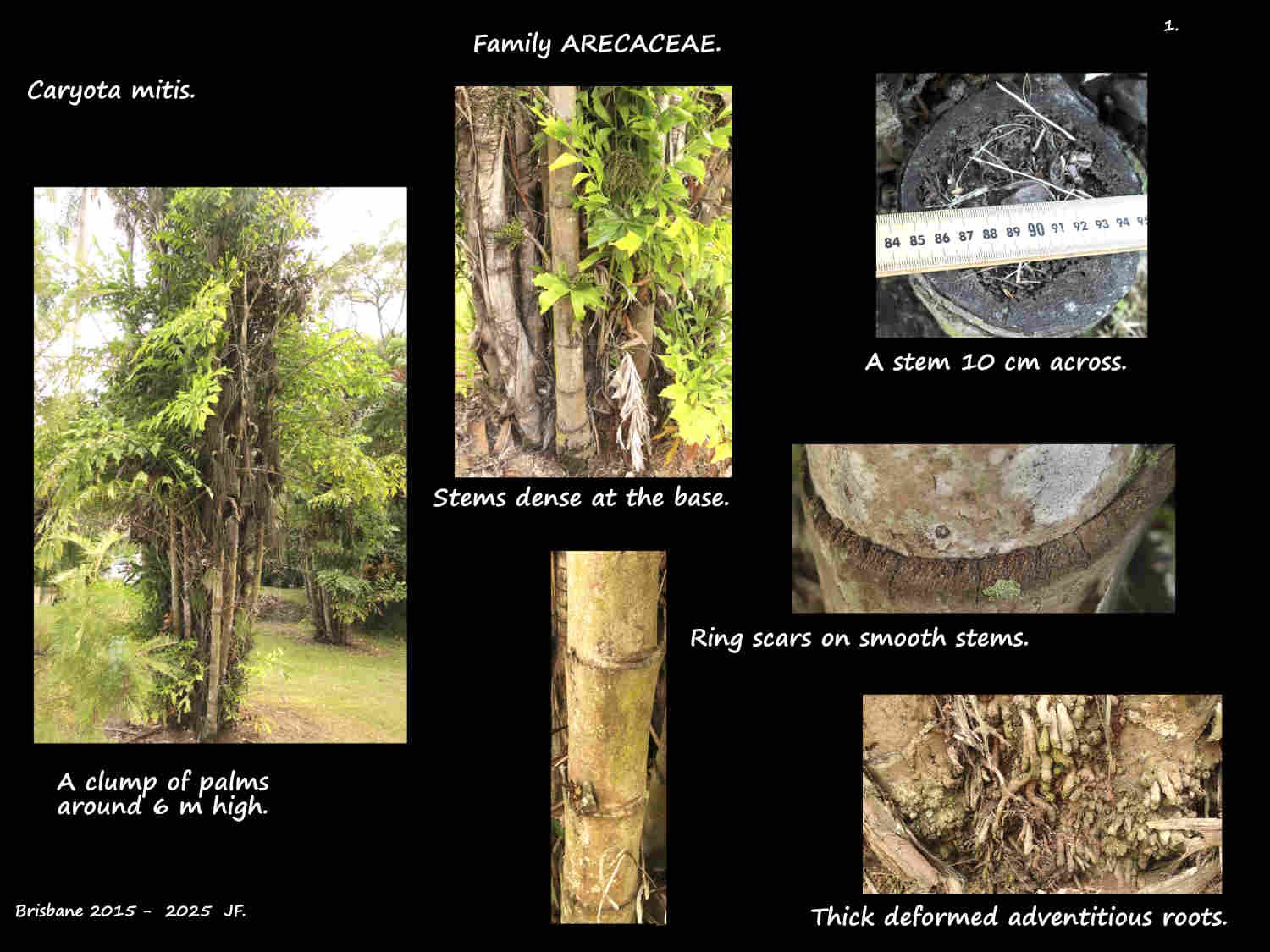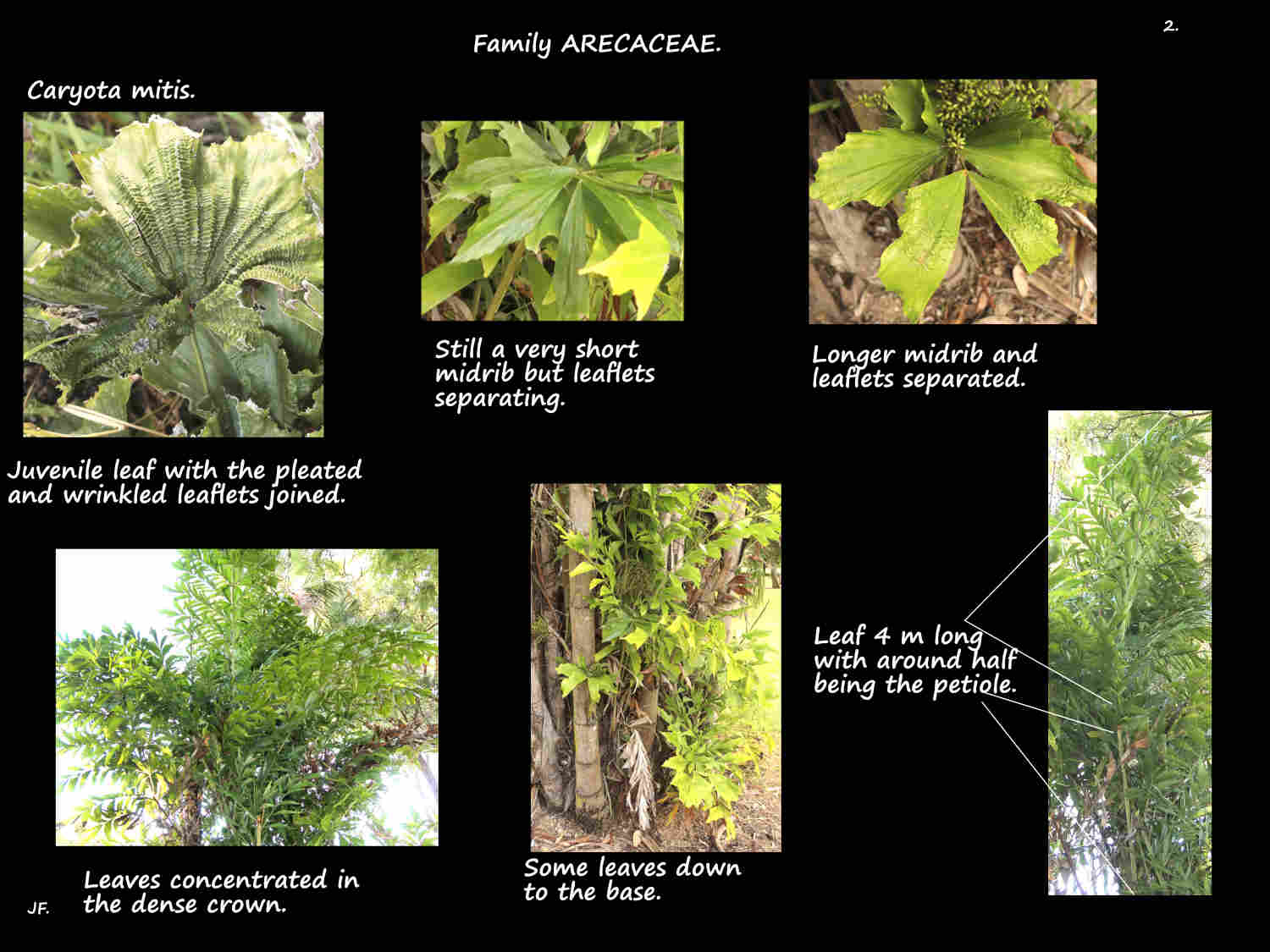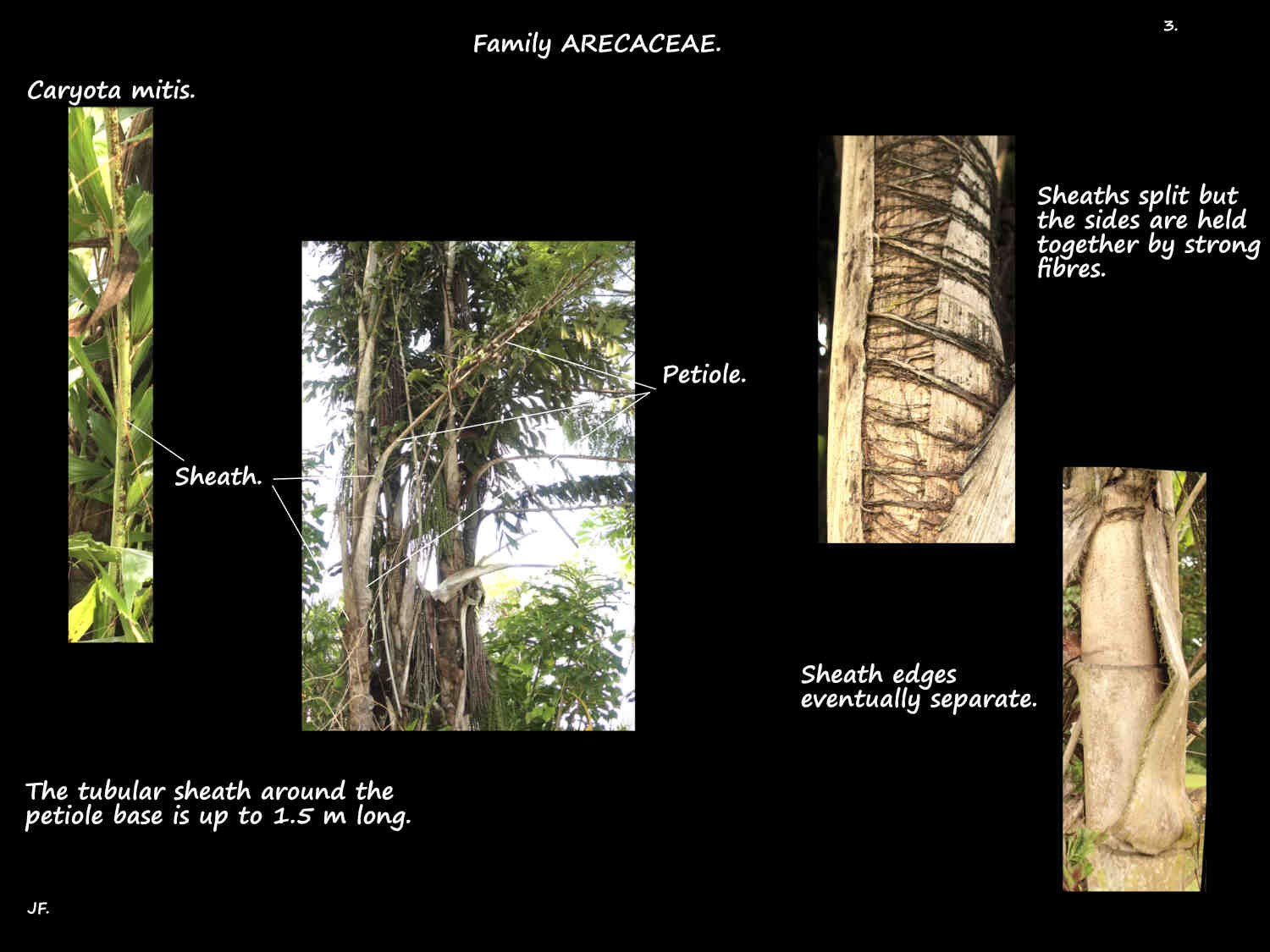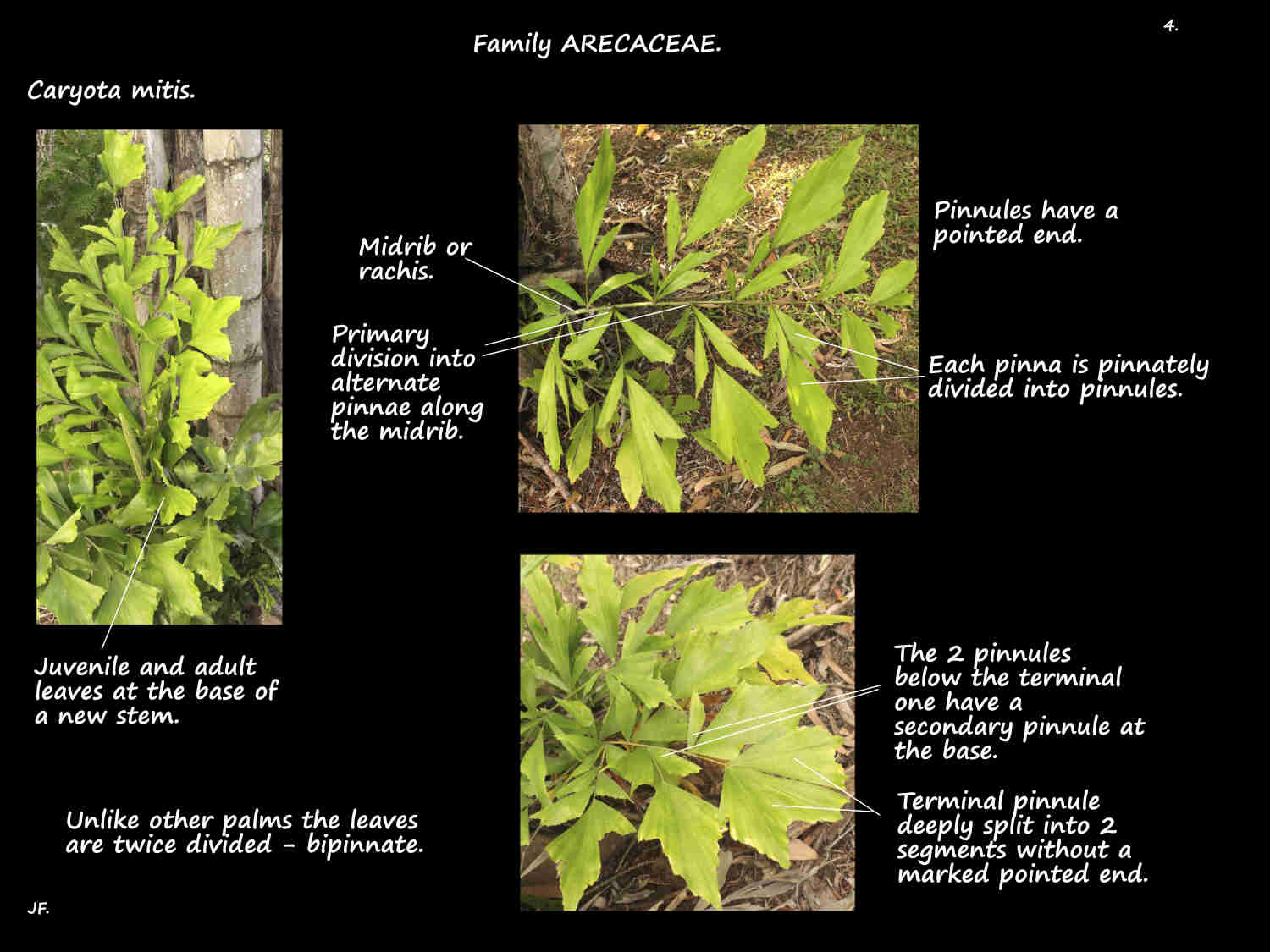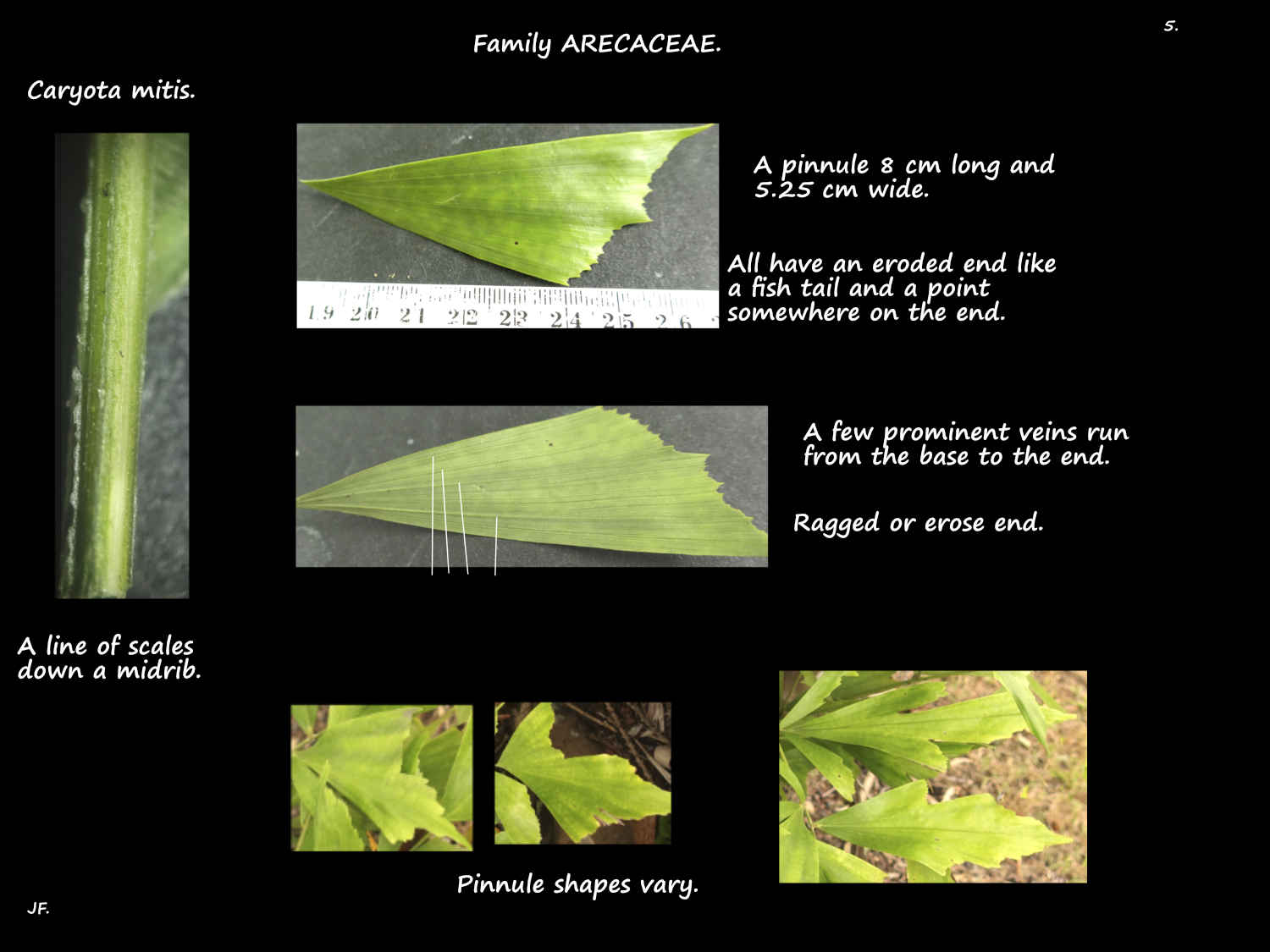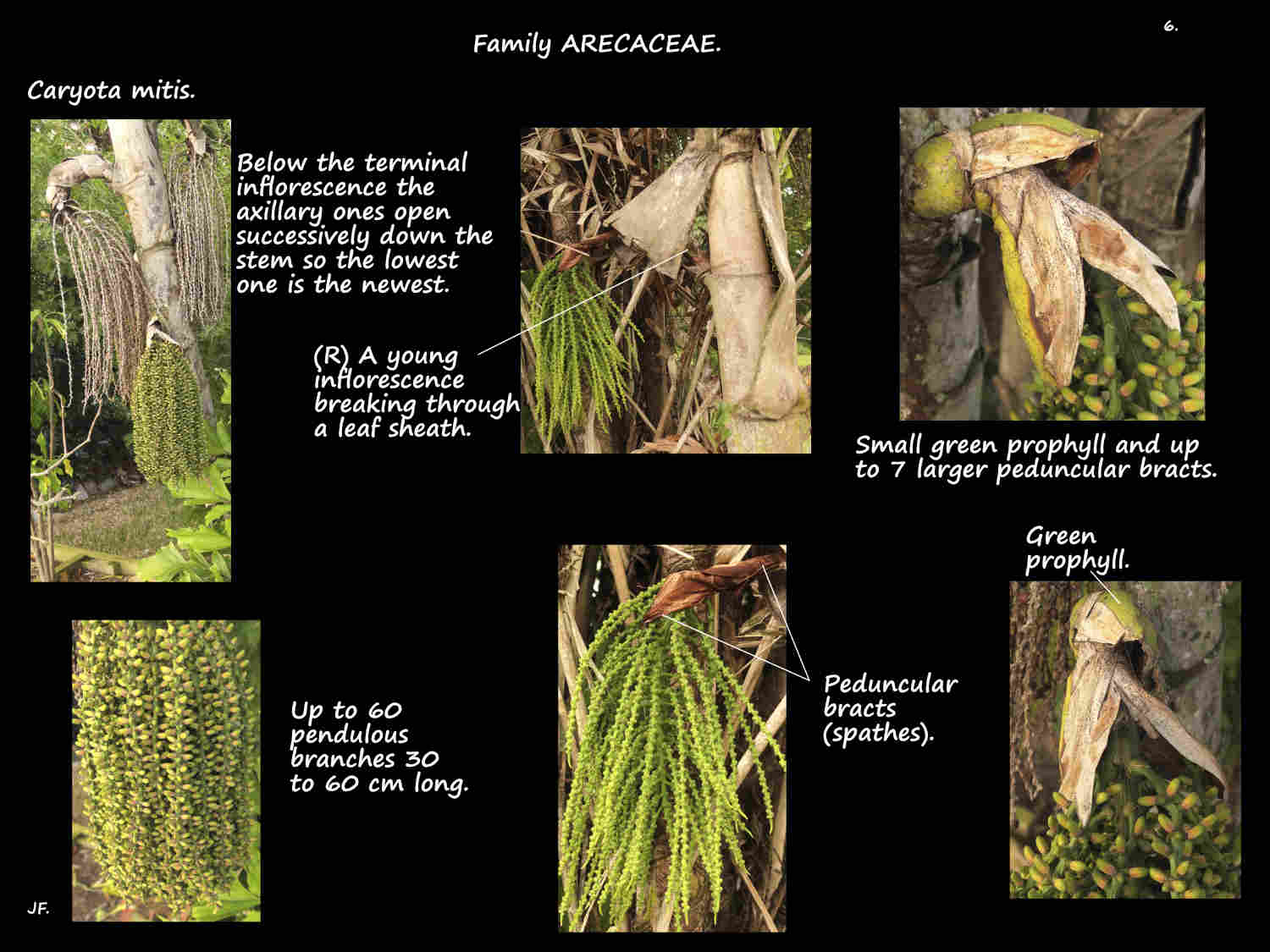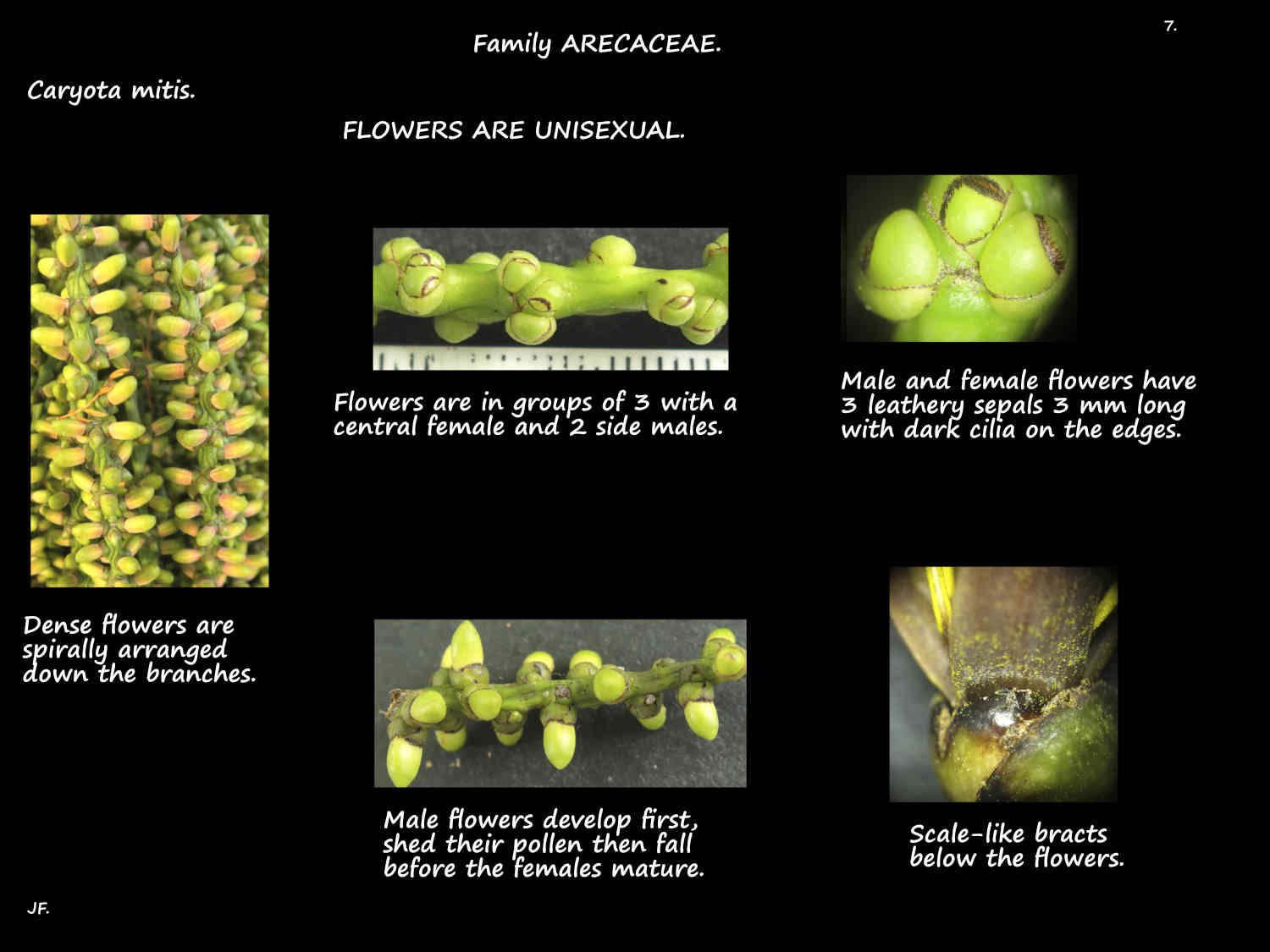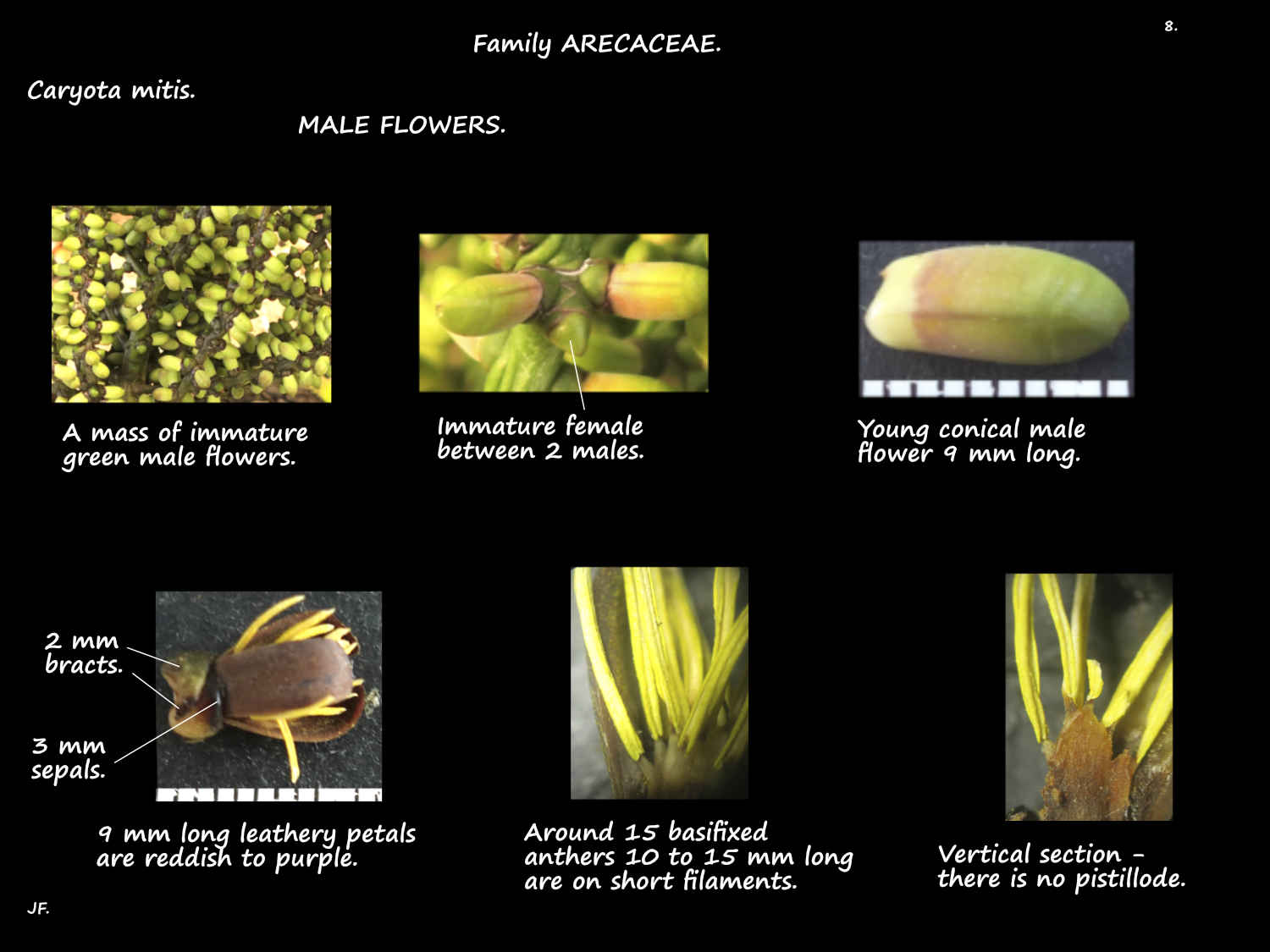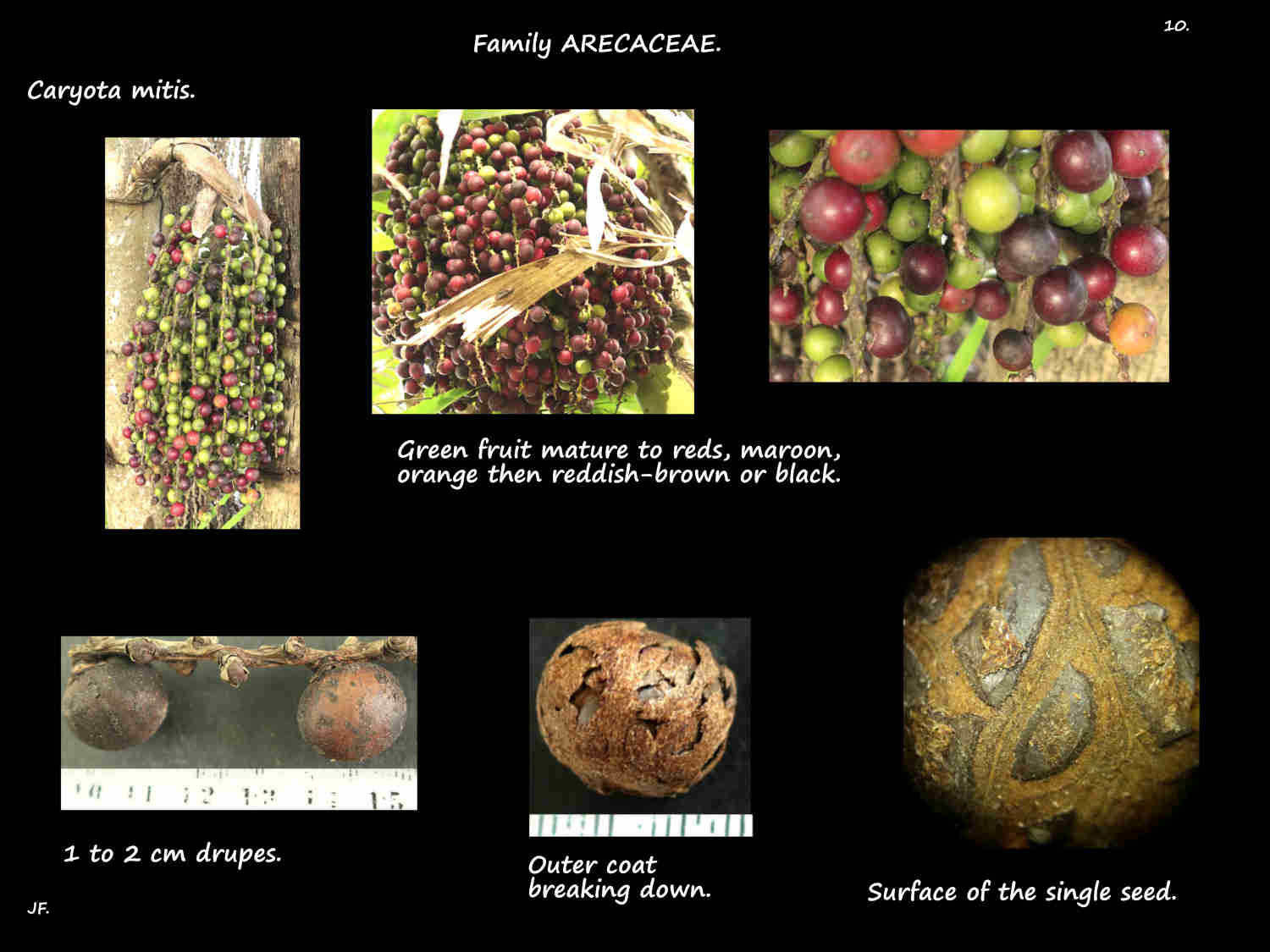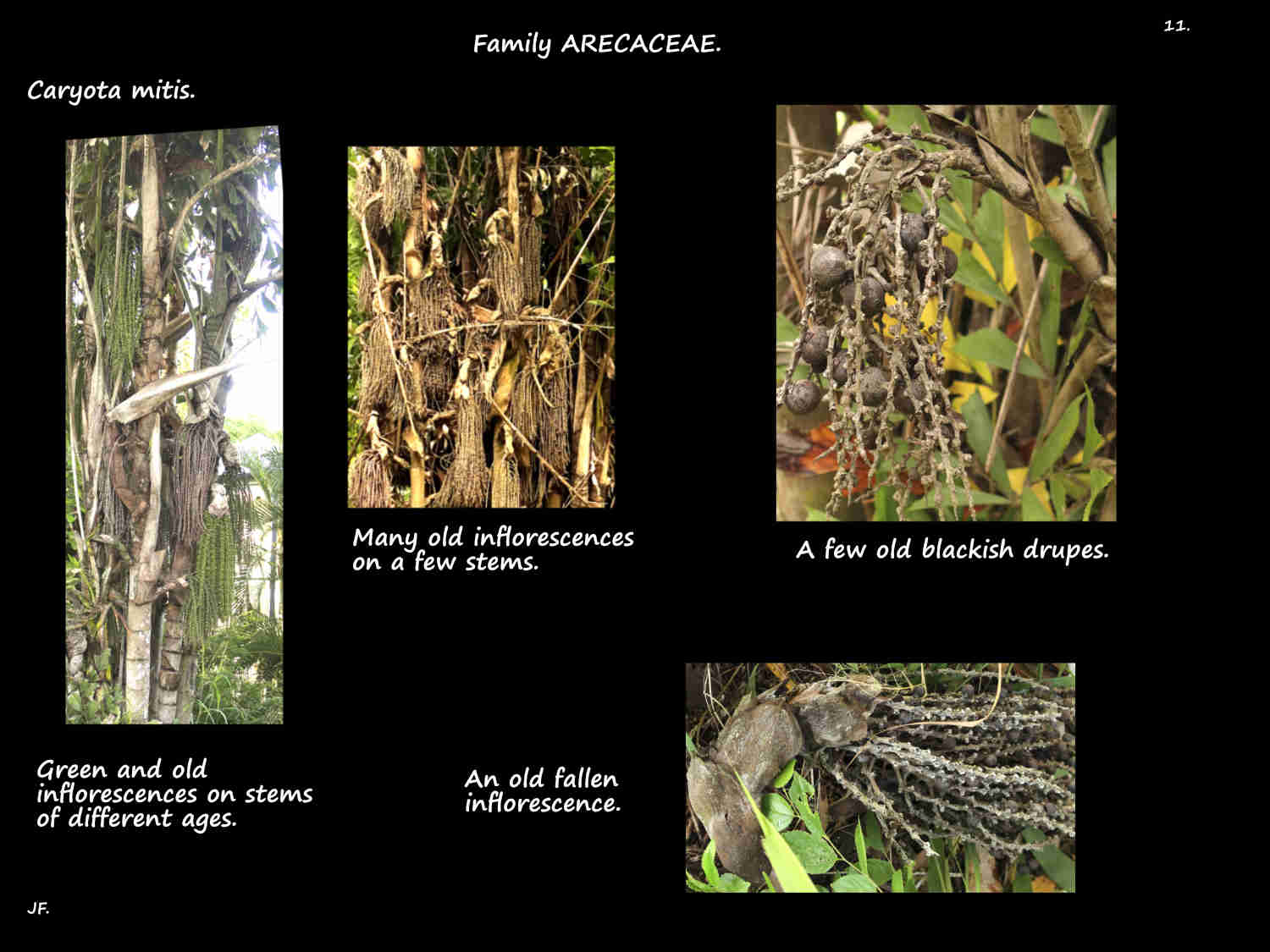The Clustering Fishtail palm is native to S.E. Asia.
Seen in parks and occasionally in gardens it can become an environmental weed.
It is naturalised in parts of northern Australia.
There are only 2 other clumping species and all three are very similar when young.
- Caryota monostachya has unbranched inflorescences – just spikes.
- Caryota sympetala has massive inflorescences with different flowers.
Caryota mitis is a very variable species.
The dense clumps can have stems 5 or 6 (over 12) m high and 15 cm wide.
Clumps are 2 to 4 m across.
Each stem can produce a number of suckers from low or underground axillary buds.
Young pale green stems have woolly hairs.
Older fairly smooth stems have ring scars from fallen leaves.
The arching leaves are mainly on the upper part of the stem forming a dense crown.
The alternate leaves are up to 4 m long with around half being the petiole.
Leaves are bipinnate with the midrib having up to around 20 pinnae on each side.
Each of these pinnae has 15 to 20 pinnules (leaflets) on each side.
Pinnules are up to around 15 cm long and 5 cm across.
Most have a very narrow base, straight asymmetric sides and a ragged (erose) end.
The terminal pinnule, 15 cm wide is divided into 2 (3) sections.
The 2 pinnules below this have a small secondary pinnule at the base.
Overall the shapes are very variable.
The first inflorescence is terminal.
Successive inflorescences, in the leaf axils open progressively down the stem.
Each trunk can have up to around 30 with the lowest at ground level.
The stem dies after the bottom inflorescence matures but suckers produce new stems.
Inflorescences are on a peduncle.
At the base is a small prophyll then up to 7 larger bracts (spathes).
The midrib can have up to 60 pendulous side branches 30 to over 60 cm long.
Down the stems are unisexual flowers in groups of 3.
Each group has a female with 1 male on each side.
The conical male flowers have 2 tiny scale-like bracts at the base.
The 3 sepals, around 3 mm long have tiny hairs (cilia) on the edges.
The 3 petals, 1 to 1.5 cm long are reddish to purple.
The 15 or so basifixed stamens are around 1.5 cm long.
Female flowers open after the males have fallen.
They have 3 sepals around 3 mm long and the 3 petals, around 5 mm long are cream.
The 3 staminodes consist of a just a filament.
The 1 to 2 cm drupes mature from green to orange, red and black.
J.F.
